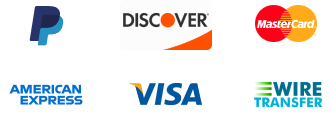The global sugar-free sparkling water market size is expected to grow at a CAGR of 7.81% during the forecast period (2025–2033). Busy lifestyles and increasing urbanization have fueled demand for portable, ready-to-drink beverages. Sugar-free sparkling water in cans and bottles is a preferred choice for consumers seeking refreshing drinks on the go. This trend is further supported by the expansion of convenience stores and vending machines.
Sugar-free sparkling water is a carbonated beverage free from added sugars, making it a popular alternative to sugary sodas and flavored drinks. It offers the refreshing fizz of traditional soft drinks without calories or artificial sweeteners, appealing to health-conscious consumers. Sugar-free sparkling water is widely enjoyed for hydration and refreshment and is available in various flavors, functional formulations, and natural ingredient options. Its rising popularity is driven by increasing demand for healthier beverage choices and innovative flavor combinations from leading brands.
Rising health consciousness is driving demand for sugar-free sparkling water as consumers become more aware of the risks associated with high sugar intake, such as obesity, diabetes, and heart disease. Many are shifting toward healthier beverage options, prompting brands to innovate with natural ingredients and functional benefits.
This growing awareness is pushing beverage companies to expand their sugar-free product lines, offering refreshing and guilt-free alternatives. As wellness trends continue to rise, the market is expected to see sustained growth.
The market faces intense competition from other health-focused beverages, including flavored infused waters, herbal teas, and functional drinks with added probiotics or electrolytes. Consumers seeking low-sugar options now have a wide range of choices, making it challenging for brands to differentiate. For instance, the rising popularity of kombucha, known for its probiotic benefits, has attracted health-conscious consumers away from sparkling water. Moreover, brands like Liquid I.V. and Hint Water offer hydration-focused and naturally flavored alternatives, further fragmenting the market.
The global market is expanding with innovations in flavors and functional ingredients. Brands are introducing unique blends, including botanical infusions, adaptogens, and vitamins, to appeal to health-conscious consumers. Demand for natural sweeteners and exotic fruit flavors is also rising, catering to evolving taste preferences.
Such innovations not only differentiate brands but also attract consumers seeking healthier alternatives. As functional beverages gain traction, companies investing in novel formulations are poised for significant growth.
| ATTRIBUTES | DETAILS |
|---|---|
| Study Period | 2021-2033 |
| Historical Year | 2021-2024 |
| Forecast Period | 2025-2033 |
| By Product Type |
|
| By Packaging Type |
|
| By Distribution Channel |
|
| Regional Insights |
|
Flavored sparkling water dominates the market due to its broad consumer appeal and variety of taste options. With growing health-conscious trends, consumers seek alternatives to sugary sodas, making flavored sparkling water a preferred choice. Brands continuously innovate with natural flavors, exotic fruit infusions, and functional ingredients to attract buyers. Additionally, endorsements from celebrities and influencers have fueled demand, positioning flavored sparkling water as the top-selling segment in the market.
Cans lead the market due to their convenience, portability, and recyclability. Consumers prefer canned beverages for on-the-go consumption, while brands leverage vibrant, eco-friendly designs to enhance appeal. The aluminum can's superior ability to preserve carbonation and freshness further boosts its dominance. Moreover, rising sustainability concerns have prompted brands to adopt recyclable aluminum, reinforcing cans as the most popular packaging choice in the sparkling water segment.
Supermarkets and hypermarkets dominate the distribution of sugar-free sparkling water, offering a vast selection and competitive pricing. These retail giants provide consumers with the convenience of bulk purchases and in-store promotions, increasing brand visibility. Many brands secure premium shelf space, attracting impulse buyers. Additionally, supermarkets' ability to offer discounts and bundle deals makes them the preferred shopping destination, solidifying their dominance in the distribution of sugar-free sparkling water.
North America is the most significant shareholder in the global market, accounting for a substantial 42% market share. This prominence is driven by a growing consumer shift toward healthier beverage options, spurred by increasing awareness of the adverse effects of excessive sugar consumption, such as obesity and diabetes. Consumers are actively seeking low-calorie, sugar-free alternatives, propelling the demand.
Furthermore, major beverage corporations are responding to this trend by expanding their portfolios to include healthier options.
These strategic moves by industry leaders reflect the robust demand for sugar-free sparkling water in North America. As health and wellness trends continue to influence consumer preferences, the region's market growth is expected to maintain its leading position, with companies innovating to meet the evolving demands for healthier beverage options.

Request Table of Contents (TOC), Please Fill below form



